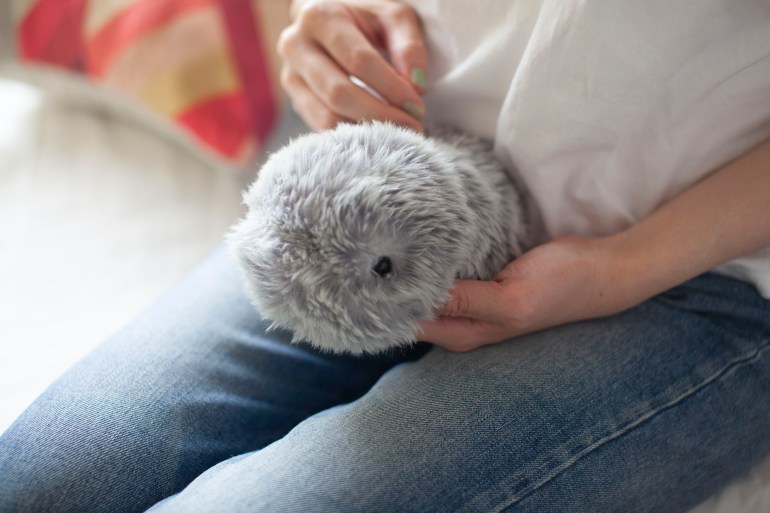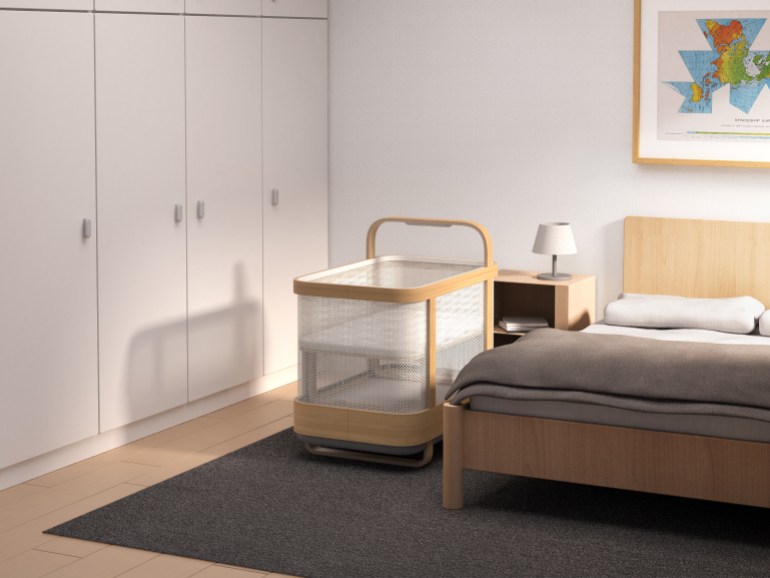Robots rising: Firms debut fuzzy pets, household helpers at CES
Firms unveiled AI-enabled gadgets aimed at making staying home during the COVID-19 crisis easier, safer and less frustrating at the first fully virtual Consumer Electronics Show.

Exhausted from the isolation, extra chores and sleepless nights of the coronavirus pandemic? Get a robot to help.
Firms debuted artificial intelligence-enabled gadgets aimed at making staying home during the COVID-19 crisis easier, safer and less frustrating at this year’s first fully virtual Consumer Electronics Show.
Keep reading
list of 4 itemsA small firm’s survival story may be Lebanon’s 2020 silver lining
Could this robot dolphin replace captive animals in marine parks?
No ‘crystal ball’ for China’s robot startups amid virus fallout
Plenty of people adopted pets during the pandemic to ease their isolation. In fact, so many animals were adopted from shelters that a shortage developed in some places. But if you missed out on adopting a real pet for snuggles, not to worry.
Japanese firm Vanguard Industries is offering a furry robot named MOFLIN that coos affectionately, nuzzles your hand and clearly likes to be petted.
Looking a lot like a tribble from the TV show Star Trek, the fuzzy love bug has sensors and an algorithm that enable it to learn from its surroundings and human interactions.

Over time, the MOFLIN develops its own unique personality to make it even more like a real pet. The furry robot, which took home the CES award for best innovation in robotics, will be available this spring. No word yet on what it costs — but at least it’s housebroken.
High-tech baby cot Cradlewise aims to help parents through those initial sleepless nights by using AI to learn an infant’s waking patterns and then rocking him or her back to sleep.
Cradlewise uses a regular RGB (red, green and blue) camera as well as a 3D camera to detect motion and an array of microphones to detect sound, including a baby’s cries. The microphones are arranged to cancel out background noise, so a crying baby on Netflix won’t confuse its system.
The sensors and AI software can then determine when the baby is close to waking up. At that point, if it’s still time to sleep, the crib moves gently up and down while it plays soothing music to keep the baby in dreamland while alerting parents via their smartphones that precious nap time is almost up.

Cradlewise is the brainchild of company founder and CEO Radhika Patil, developed after she and her husband struggled to find a sleep solution for their own baby.
“She was an extremely light sleeper,” Patil told Al Jazeera of her daughter.
So far, the smart cradle is only available in California’s San Francisco Bay area, where Patil said it is saving parents more than two hours of extra sleep per day. But if you want a robot to rock your baby, it will cost you — Cradlewise will be available online for a cool $1,499 beginning in March 2021.
Helping out around the house
If you want a robot that’s a bit more mobile, there’s Scout — a sleek, high-tech contraption that can fit into the palm of your hand and zip around your house on highly ribbed wheels. Scout has sensors that enable it to avoid obstacles and scoot sideways around objects if needed.
It’s also happy to do guard dog duty. Scout has a camera behind its front panel, and AI enables it to determine whether it’s seeing a human or animal. Scout can send a 13-second message to a mobile phone instantly via the cloud and internally record up to two hours of activity.
But for privacy reasons, there is no facial recognition software on Scout and the surveillance function can be turned off, said Jun Ye, cofounder of Pilot Laboratories in San Diego, which worked with subsidiary Moorebot on Scout.
Ye also emphasises that Scout is about more than surveillance.
“This robot is actually pretty fun,” Ye told Al Jazeera. “It supports something called scratch — scratch language programming.”
Scratch is a graphical programming language that kids can use to teach the robot to do more things, Ye explained. Moreover, Scout comes with a port on top so people can customise it — by attaching a 3D-printed robotic arm, for example.
Pets and kids are fun, of course, but also messy. If you want a robot to help you around the house, Samsung is working on Bot Handy — a creation that will be able to load the dishwasher, pick up after the kids and pour you a refreshing beverage at the end of the day.
Bot Handy has an extension arm with a gripper and can stretch its height to reach shelves. Its AI capability enables it to recognise the shape and material of the object it grabs, so it will pick up a glass with just the right amount of pressure.

“Bot Handy can move around and do things like set the table or put away groceries,” explained Samsung Research head Sebastian Seung in a video at this year’s CES.
Unfortunately, for those hoping for help now with the dishes, Bot Handy is still in development.
But if Bot Handy isn’t available yet to pour you a glass of Pinot Grigio at the end of a long Zoom call, you could always brew your own beer.
INTHEKEG — which is being developed by a South Korean company of the same name — is about the size of a dishwasher and can make up to four varieties of beer per week.
The device uses prepackaged ingredients but lets users develop their own flavour of craft beer, the company said in an email. The firm is also working on expanding the types of beverages the machine can produce to perhaps include kombucha, wine and sake.
Of course, a big part of craft beer brewing is bragging about it. But if you’re having trouble texting after a few refreshing beverages, then you might want to download a new keyboard to your phone that has 70 percent more space per key.
Conventional keyboards come from the age of the typewriter and, as they were squeezed down to fit mobile phones, the keys became especially narrow — a problem for typing with our round fingertips, according to David Eberle, CEO and cofounder of the Swiss firm Typewise.
“Most of the mistakes are made in the horizontal dimension — so on the left or the right of a specific key,” Eberle told Al Jazeera.
Typewise uses hexagons instead, allowing it to increase the key size by 70 percent — so your thumbs are less likely to make mistakes.
“By having larger key sizes, obviously, you’re more likely to hit the actual key that you intended to hit,” Eberle explained.
The app also has privacy perks: Typewise’s advance autocorrect is entirely contained within a user’s device itself, so no data is being sent to a server in the cloud.
“Nothing that the user types ever leaves his device on a keyboard level,” Eberle added.
The newest iteration of Typewise, which will have a no-cost version, will be available for download in February.